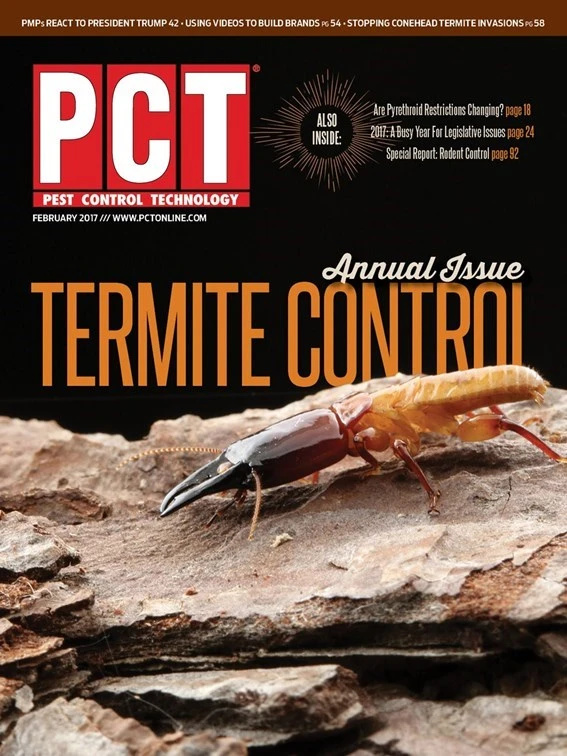The pursuit of taking pictures of wildlife has been going on ever since the camera was first invented. A number of years ago, I remember going with a friend to drop off a roll of exposed camera film that we had taken out of his “newfangled” game camera to get developed. His camera would take as many pictures as you could afford to cover in costs of film, batteries and development. The results often were mixed with an occasional decent picture of a deer or some other critter happening by.
Fast forward 30 or so years and technology has made some significant advances. All you have to do is go online to any major outdoor retailer and the selection and variety of trail cameras that are now available is almost staggering, not to mention overwhelming!
In my analysis and work using these cameras in the field, the following points really helped me decide what type of trail camera to purchase to augment our pest management efforts for clients:
PRICE RANGE. Typically, you get what you pay for. First, determine your price range. Then, research the cameras and their features so you truly understand the return on your investment. And, read as many reviews as available — it’s a great way to narrow down your options.
TRIGGER SPEED AND SENSITIVITY. Determine what the use(s) are going to be for your camera. For me, having the most sensitive and fastest trigger speed available in my price range has been a great strategy. Most higher-end trail cameras have advanced options for adjusting trigger sensitivity.
IMAGE RESOLUTION. Trail cameras are typically available in both daytime color and black and white image resolution for night. Note that the sophistication of the resolution can vary widely and what the manufacturer claims vs. what you will experience in the field may not coincide.
WHAT TYPE OF FLASH? Most of the moderate to higher-end trail cameras use infrared type flashes that are not visible. However, some infrared cameras will emit a red glow that can alert animals, while others have a totally “non-visible or black-out” type filter that cannot be detected at all. Also, note that some of the less expensive trail cameras still use traditional “white light” type flashes at night.
BATTERY TYPE AND CONSUMPTION. Most modern trail cameras use AA size batteries, however some use C and D size. Others require the use of the more expensive lithium-type batteries to operate optimally. (Note that it makes life a lot easier when all of your cameras use the same type of batteries.)
MONITORING/MEMORY. Most trail cameras today utilize SD memory cards, plus there are a number of units coming on the market that have a transmission feature that will allow you to purchase a wireless subscription and have images emailed to you when the camera is triggered. I found out “the hard way” that my first two internet transmitting cameras required 4Gs of cell service to transmit images. As Murphy’s Law would have it, I learned after I purchased and set up the cameras that we didn’t have adequate cell service in our area to power the transmitting feature. On a more positive note, the remote monitoring technology options in trail cameras are rapidly improving, an important advancement for pest management uses in particular.
EASE OF USE. In the past, I have purchased trail cameras that are complicated to set up and a pain to use. I also have purchased others that are simple. The key is to do enough research to make the right selection for your needs. In addition, the size and options for mounting the camera also will affect how you use it and the simplicity of the mounting process.
From a pest management perspective, we have encountered a number of unique situations where a trail camera proved to be invaluable. Several months ago, I used one to confirm elimination of a heavy rat infestation at a large farm by their grain bins. After a week with the camera set up “on the job,” we had three wrens, one snake, two cats, three squirrels and a possum venture past the main drainage system where our camera was mounted. (Pretty strong evidence that rat activity was not present.) Last month, we confirmed that there was significant wildlife movement adjacent to the runway of an airport.
With the proper selection and use of modern trail cameras you can have “another set of eyes” working for you around the clock. The information obtained from their use can then be used to improve and evaluate the services you are providing for your clients.
The author is president of McNeely Pest Control, Winston-Salem, N.C. A member of the Copesan Services Technical Committee, McNeely has served on the board of the North Carolina Pest Management Association, is a member of the Entomological Society of America and is a North Carolina Wildlife Damage Control Agent.

Copesan is an alliance of pest management companies with locations throughout North America. To learn more, visit www.copesan.com.

Explore the February 2017 Issue
Check out more from this issue and find your next story to read.
Latest from Pest Control Technology
- Hygiene IQ Uses Smart Sensor Technology to Detect Rodents
- Rollins Acquires Saela Pest Control
- PCT Spotlights Leaders in Pest Management for Women’s History Month
- Honey Bee Colony Losses Could Reach up to 70 Percent, WSU Researchers Report
- SiteOne Hires Dan Carrothers as Vice President of Agronomic Business Development
- U.S. Structural Pest Control Market Grew Nearly 8% in 2024, Specialty Consultants Reports
- Hands United Foundation Supports PMPs in Hardship Through Financial Relief
- Proven Pest Exclusion Solutions





